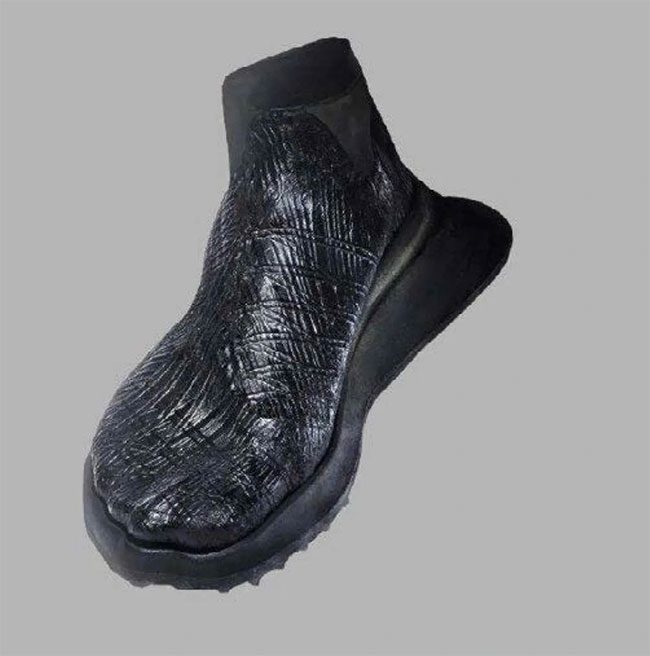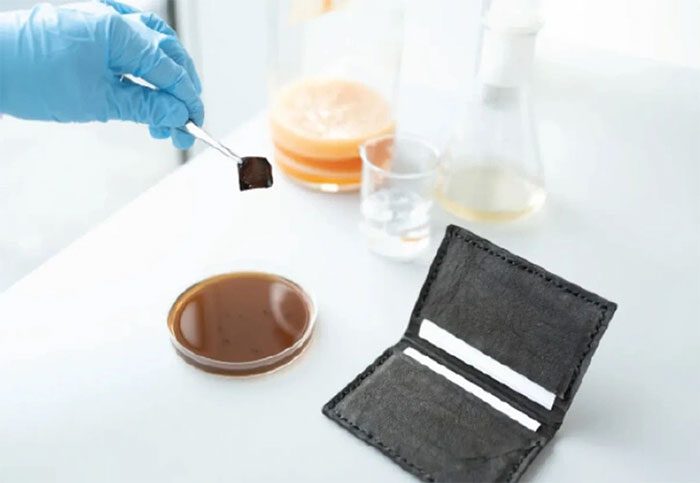Researchers in the UK have successfully genetically modified the bacterium Komagataeibacter to create a “vegan” leather that is free from plastics and has the ability to self-dye black.
Like many materials used in the fashion industry, leather and the dyeing process—especially black dyeing—have a negative impact on the environment. Therefore, a team of scientists from Imperial College London has engineered a type of Komagataeibacter to produce bacterial cellulose (BC) that can self-dye black.

The shoe (excluding the sole) made from genetically modified Komagataeibacter – (Photo: Imperial College London).
BC is a promising sustainable leather alternative due to its properties, low infrastructure requirements, and biodegradability. Genetically modified Komagataeibacter can produce the enzyme tyrosinase, which helps form black pigments.
To demonstrate the potential of this new method, the team created a black shoe (excluding the sole) from genetically modified bacteria in just two weeks. They inoculated the BC into a shoe mold using the genetically modified bacteria, resulting in a shoe that took on a black color.
The research team also created a black wallet by cutting and stitching the BC sheets secreted by the bacteria, according to IFLScience.

BC material capable of self-dyeing made into a leather wallet – (Photo: Imperial College London).
Developing BC requires a fraction of the carbon emissions, water, land, and time compared to raising cattle for leather. Unlike plastic-based alternatives, BC can be produced without petrochemicals and will biodegrade safely and non-toxically in the environment.
“Inventing a new, faster method to produce sustainable self-dyeing vegan leather is a significant achievement in synthetic biology and sustainable fashion,” said Professor Tom Ellis, one of the study’s authors.
The research team is continuing efforts to create self-dyeing BC in other colors, such as synthetic indigo from certain strains of E. coli.
The study was published in the journal Nature Biotechnology.


















































